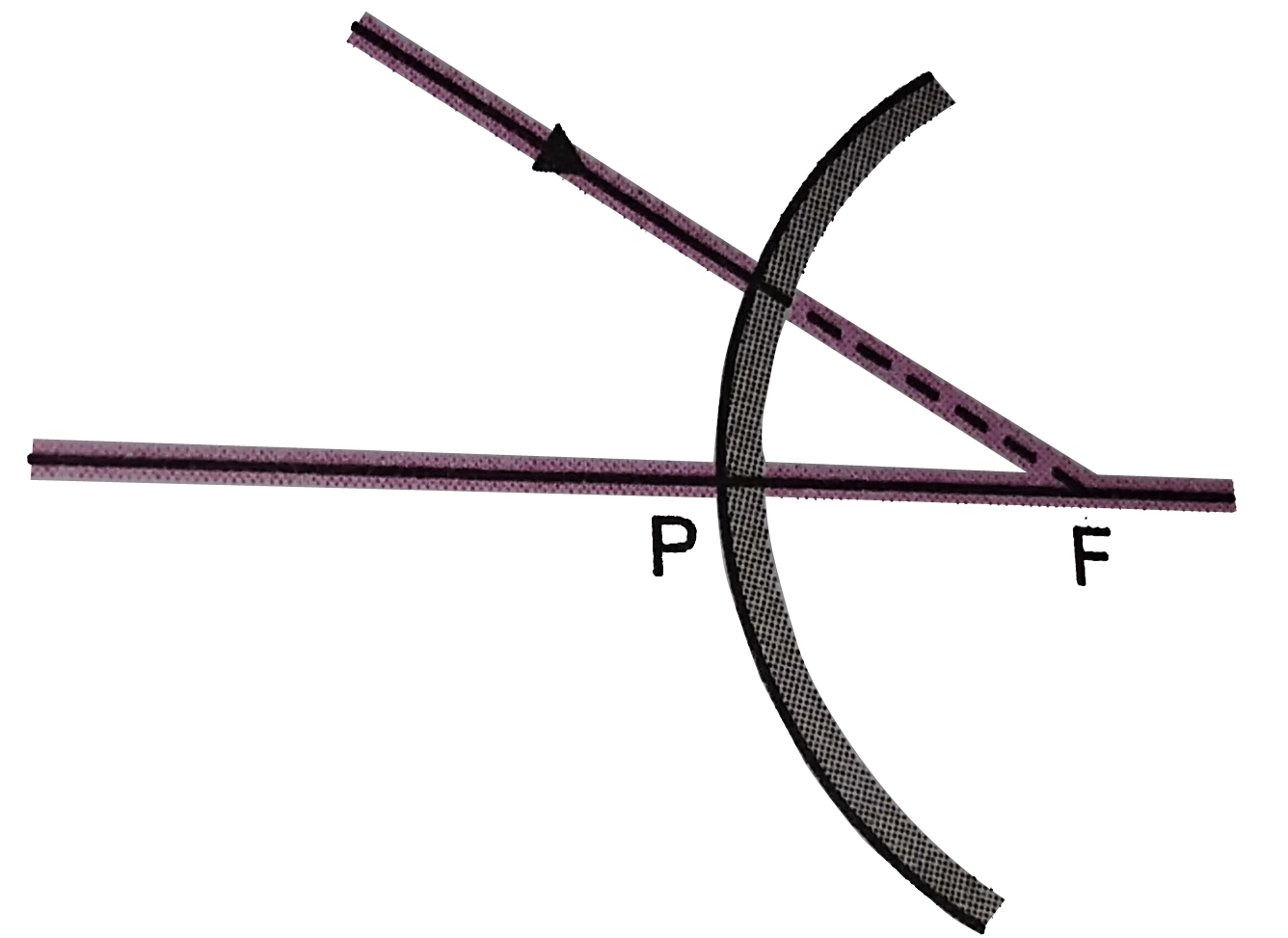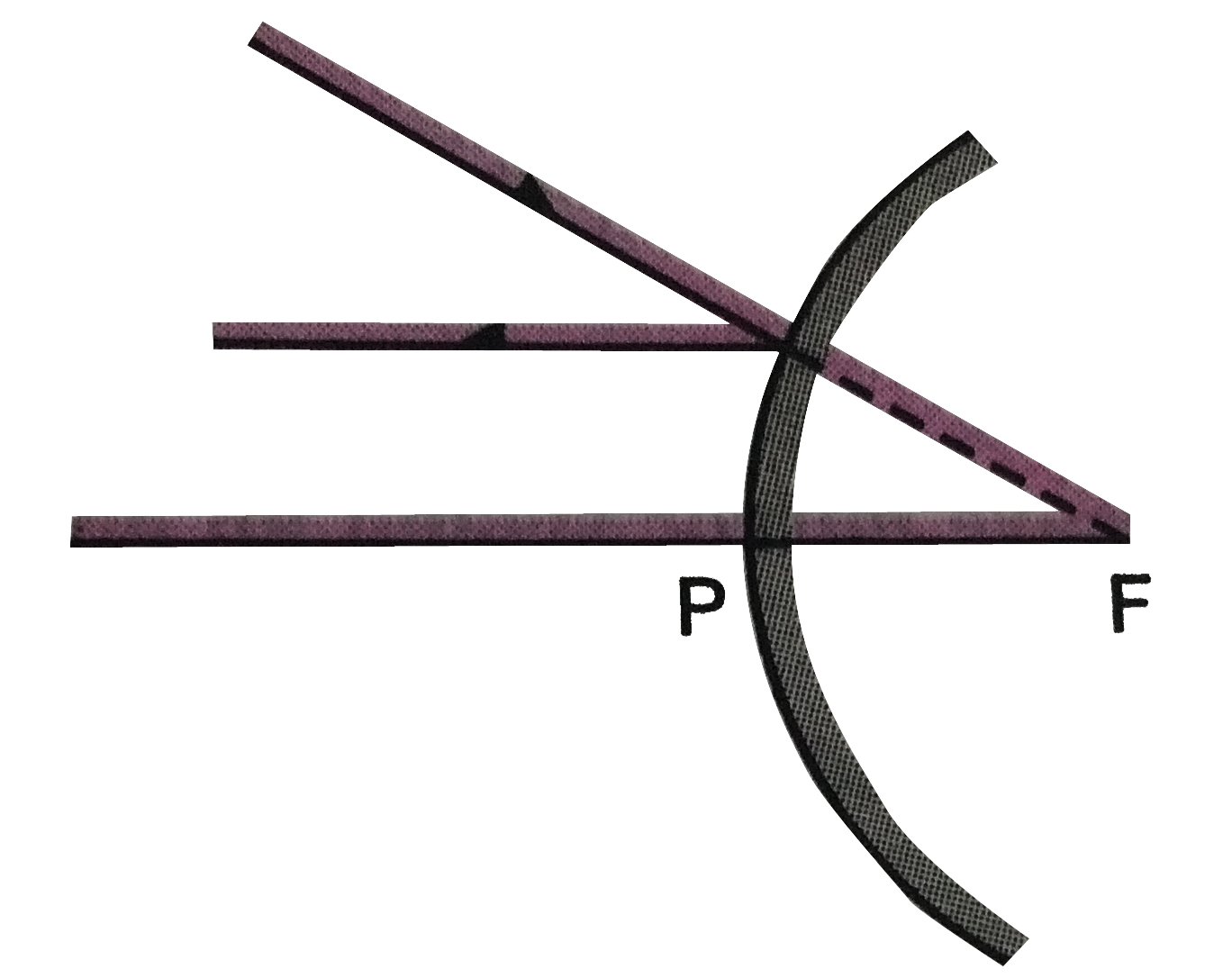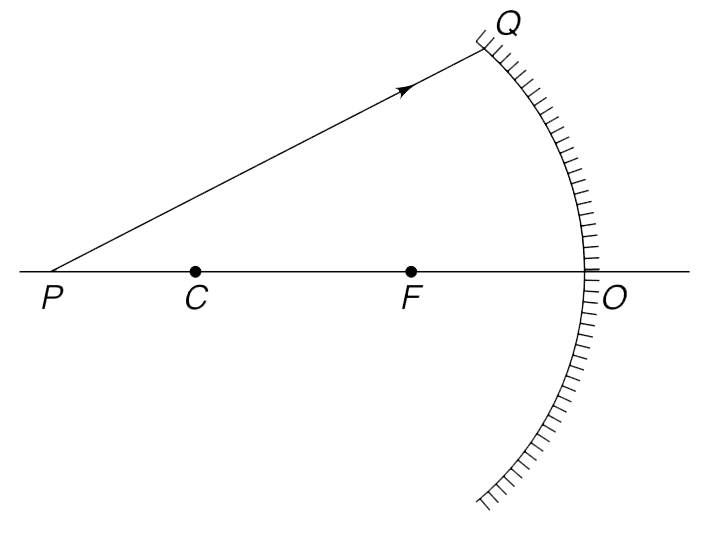Draw the reflected ray when ray the incident ray were to pass through focus of the mirror.

The reflected ray would become parallel to the principal axis of convex mirror

Topper's Solved these Questions
- REFLECTION AND REFRACTIONBook:PRADEEPChapter:REFLECTION AND REFRACTIONExercise:Short Q/A (3 marks)
Explore 35 Videos
- REFLECTION AND REFRACTIONBook:PRADEEPChapter:REFLECTION AND REFRACTIONExercise:long Q/A
Explore 7 Videos
- REFLECTION AND REFRACTIONBook:PRADEEPChapter:REFLECTION AND REFRACTIONExercise:long answer question
Explore 9 Videos
- MAGNETIC EFFECTS OF ELECTRIC CURRENTBook:PRADEEPChapter:MAGNETIC EFFECTS OF ELECTRIC CURRENTExercise:Mock Test
Explore 21 Videos
- SOURCES OF ENERGYBook:PRADEEPChapter:SOURCES OF ENERGYExercise:Mock Test
Explore 20 Videos
Similar Questions
We know that parallel light rays which are inclined to the principal axis of a spherical mirror, after reflection converge at a point in the focal plane of the mirror. With this knowledge explain how you will trace the reflected ray for incident ray PQ shown in the Fig. F is focus and C is centre of curvature of the mirror.

View SolutionDraw ray diagram in each of the following cases to show what happens atfer reflection to the incident ray when
it is falling on a concave mirror while passing through its principal focus.
View Solution
Knowledge Check
If an incident ray passes through the focus, the reflected ray will
Apass through the poleBretrace its pathCbe parallel to the principal axisDpass through the centre of curvatureWhich one of the following is the correct angle between the
incident and reflected rays when a ray of light incident
normally on a plane mirror?Aa 180∘Bb 90∘Cc 45∘Dd 0∘What are the laws of reflection?
(i) The angle of incidence is equal to the angle of reflection, and
(ii) The incident ray, the normal to the mirror at the point of incidence and the reflected ray, all lie in the same plane.
(iii) Incident ray is equal to emergent ray.
(iv) Reflected ray is equal to emergent ray.A(i) and (ii)B(i) and (iv)C(i), (ii) and (iv)DAll the above
In the case of a convex lens, show the path of the refraction ray when the incident ray of light (1) is parallel to the principal axis of the lens (2) passes through the focus of the lens (3) passes through the optical centre of the lens.
View SolutionDraw a ray diagram to show the path of the reflected ray corresponding to an incident ray of light parallel to the principal axis of a convex mirror and show the angle of incidence and angle of reflection on it.
View SolutionA ray of light is incident on a plane mirror placed horizontally. When the mirror is rotated through an angle 30∘ the reflected ray is found to be directed along the vertical. Determine the angle of incidence at the initial position of the mirror.
View SolutionCan the reflected rays be further reflected if incident on another mirror? Comment.
View SolutionAfter reflection, the light rays from a point object at the focus of a concave mirror,
View Solution